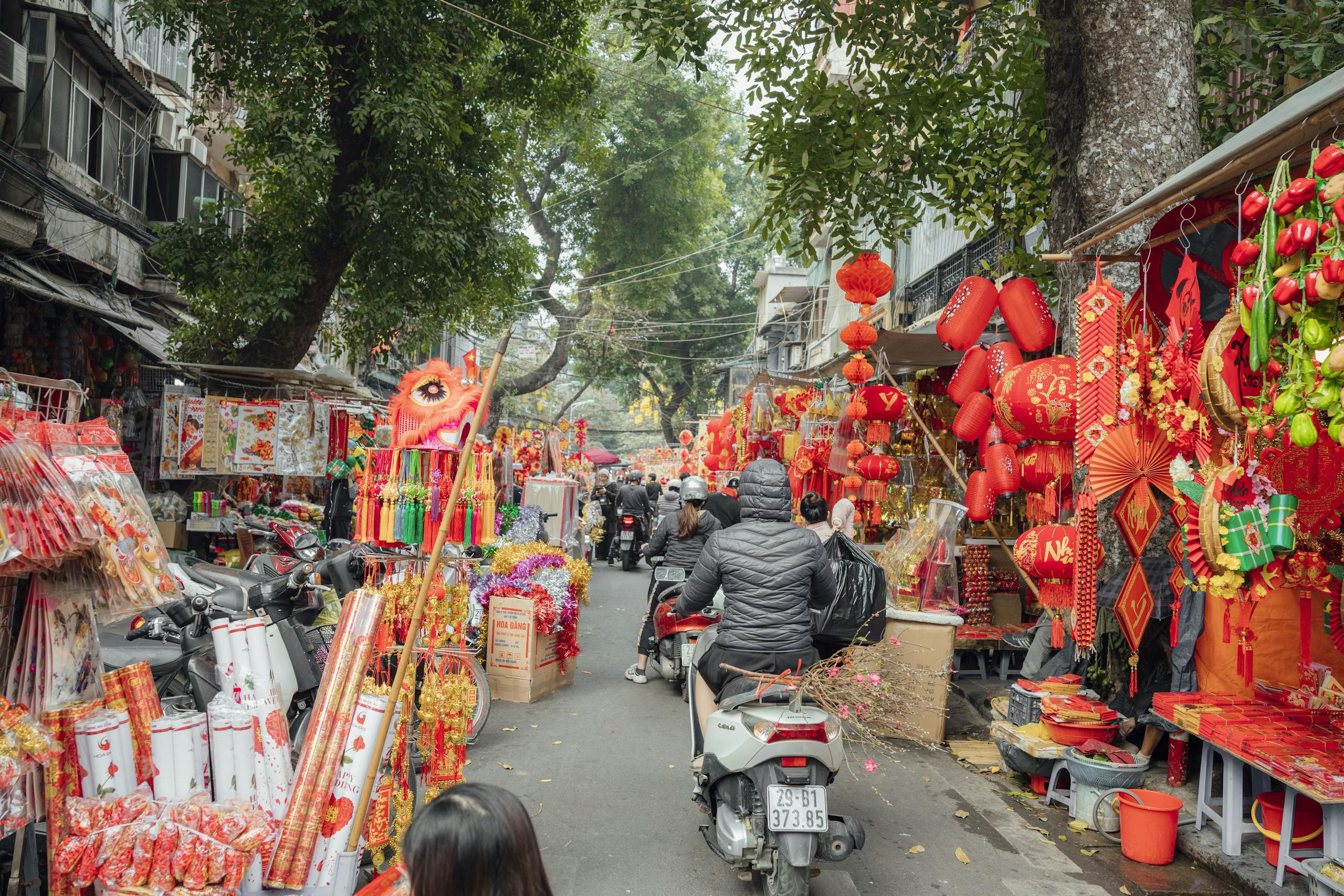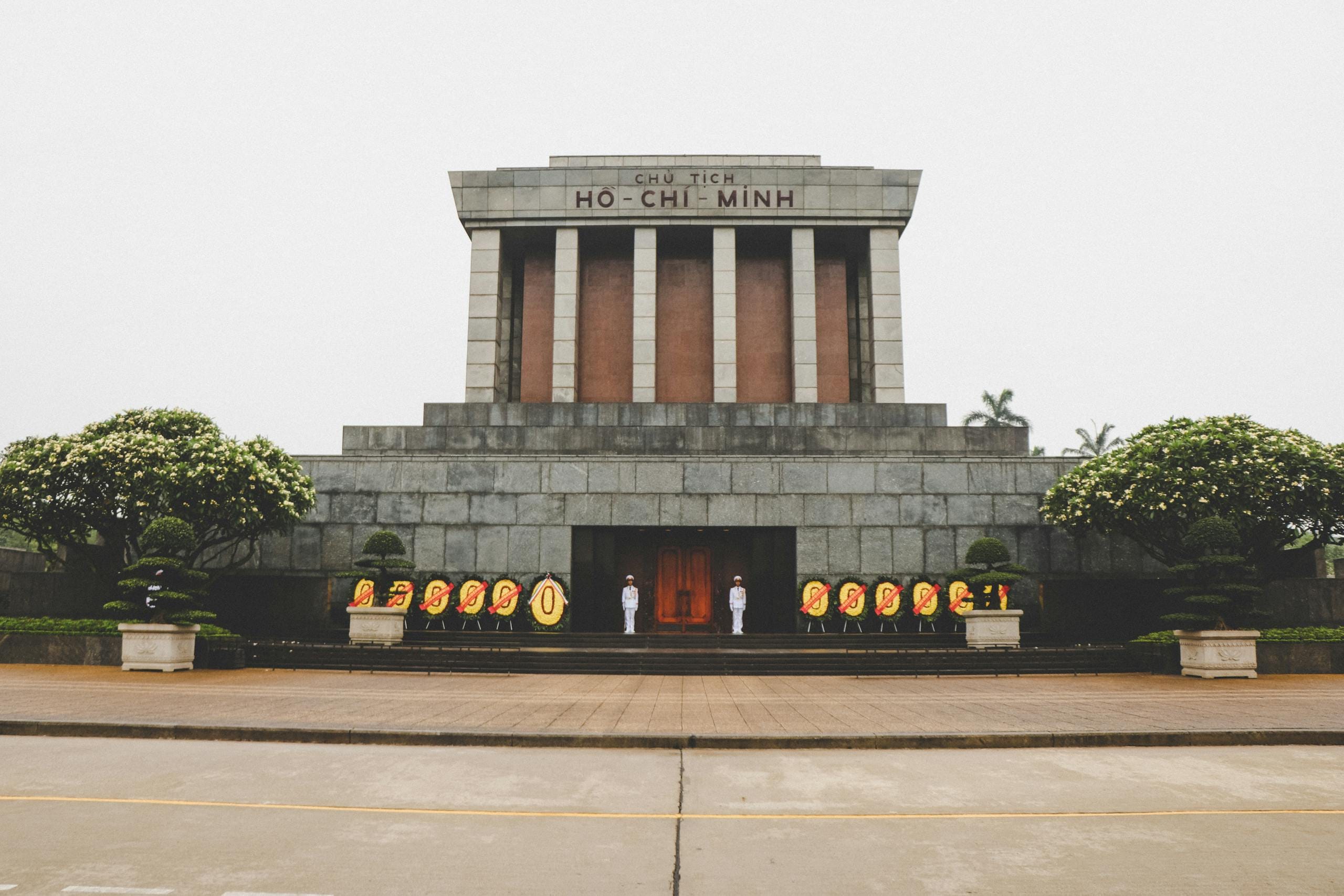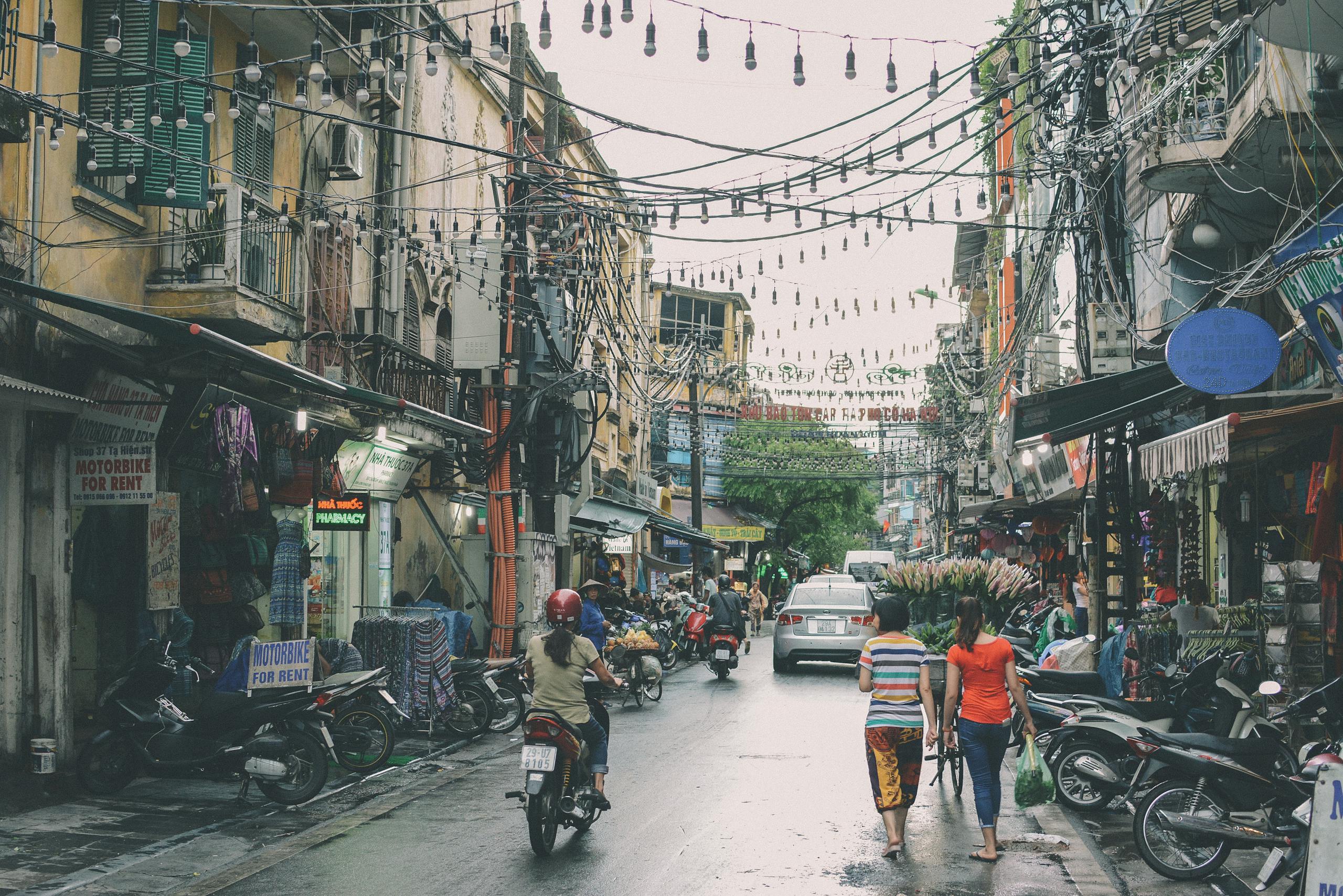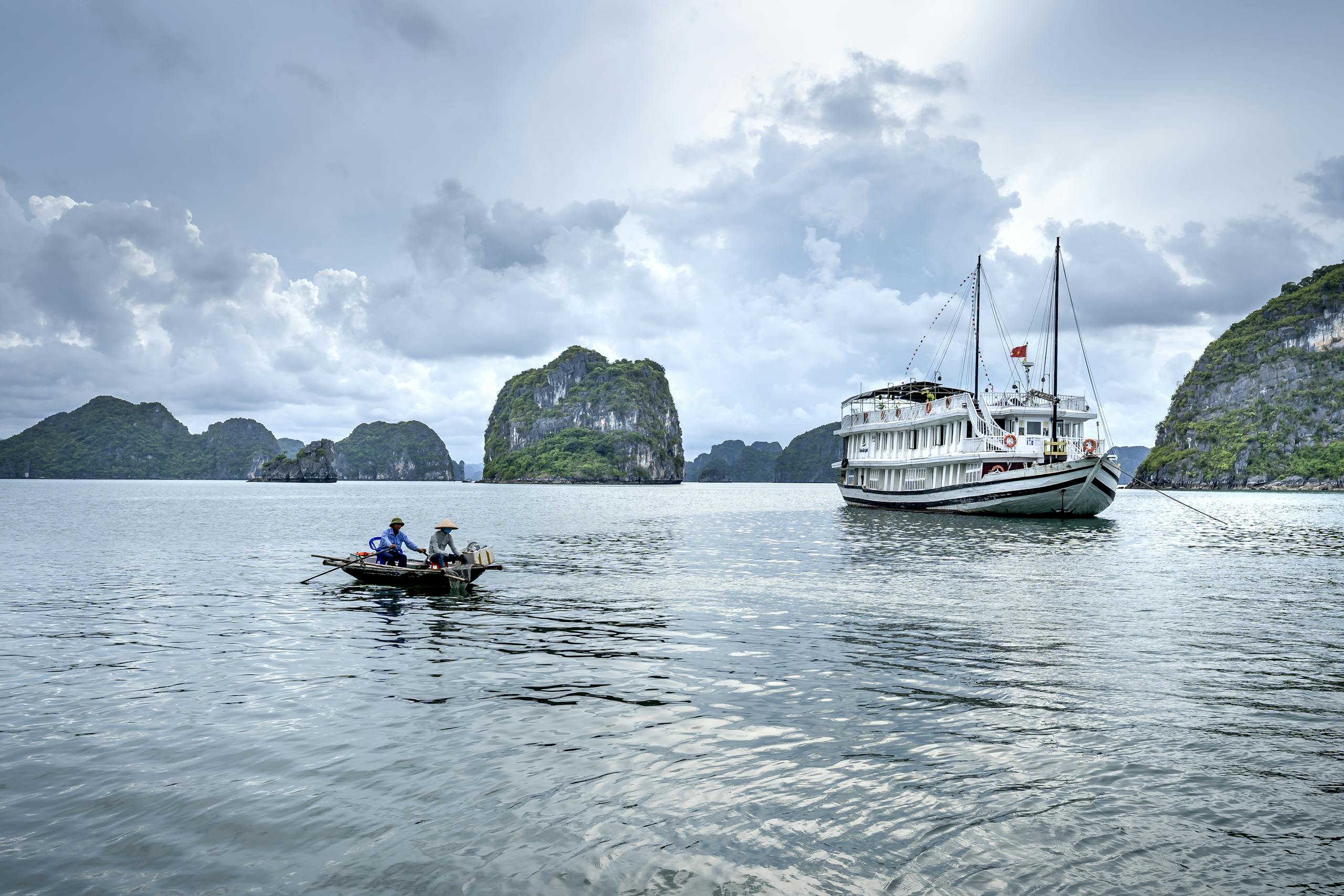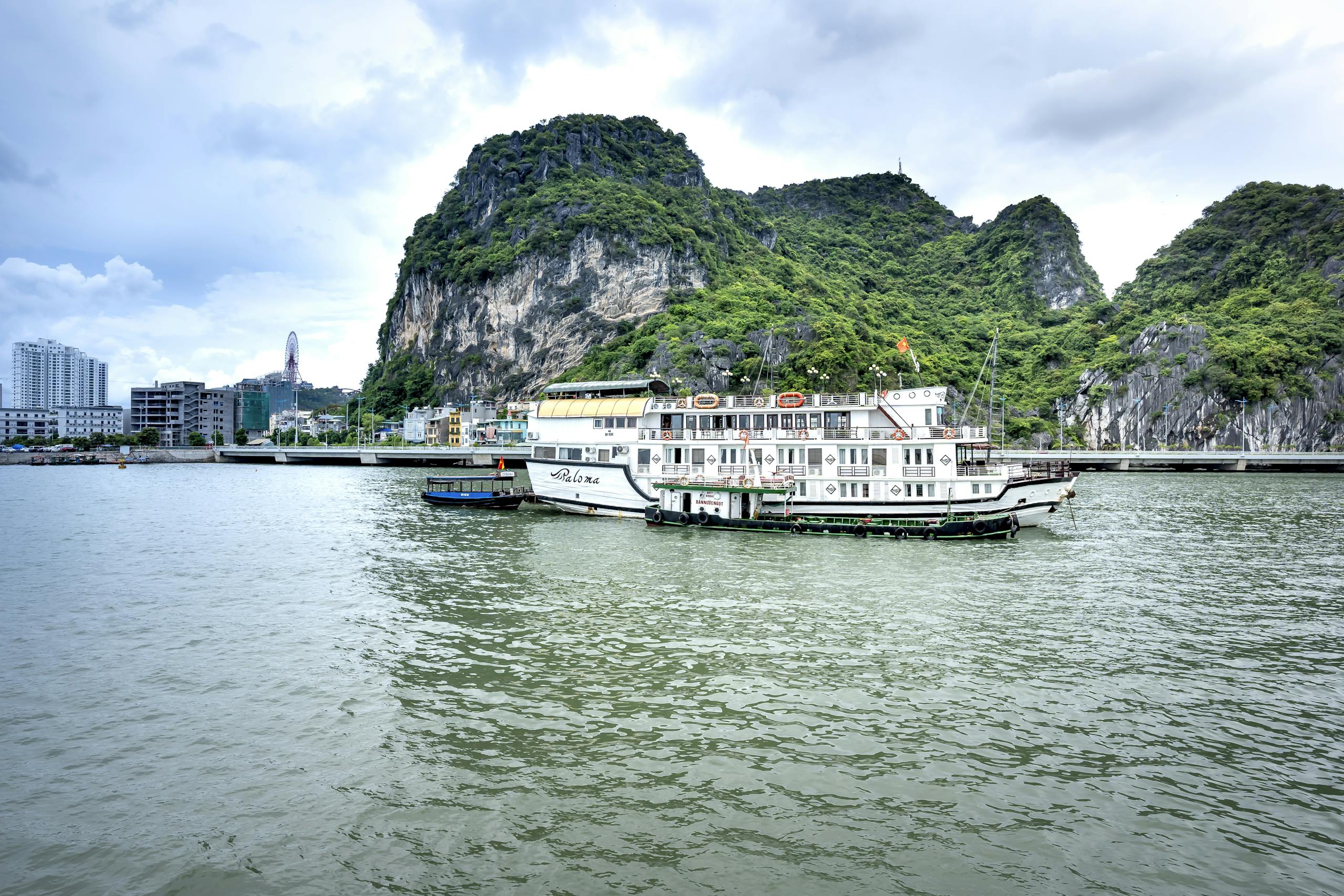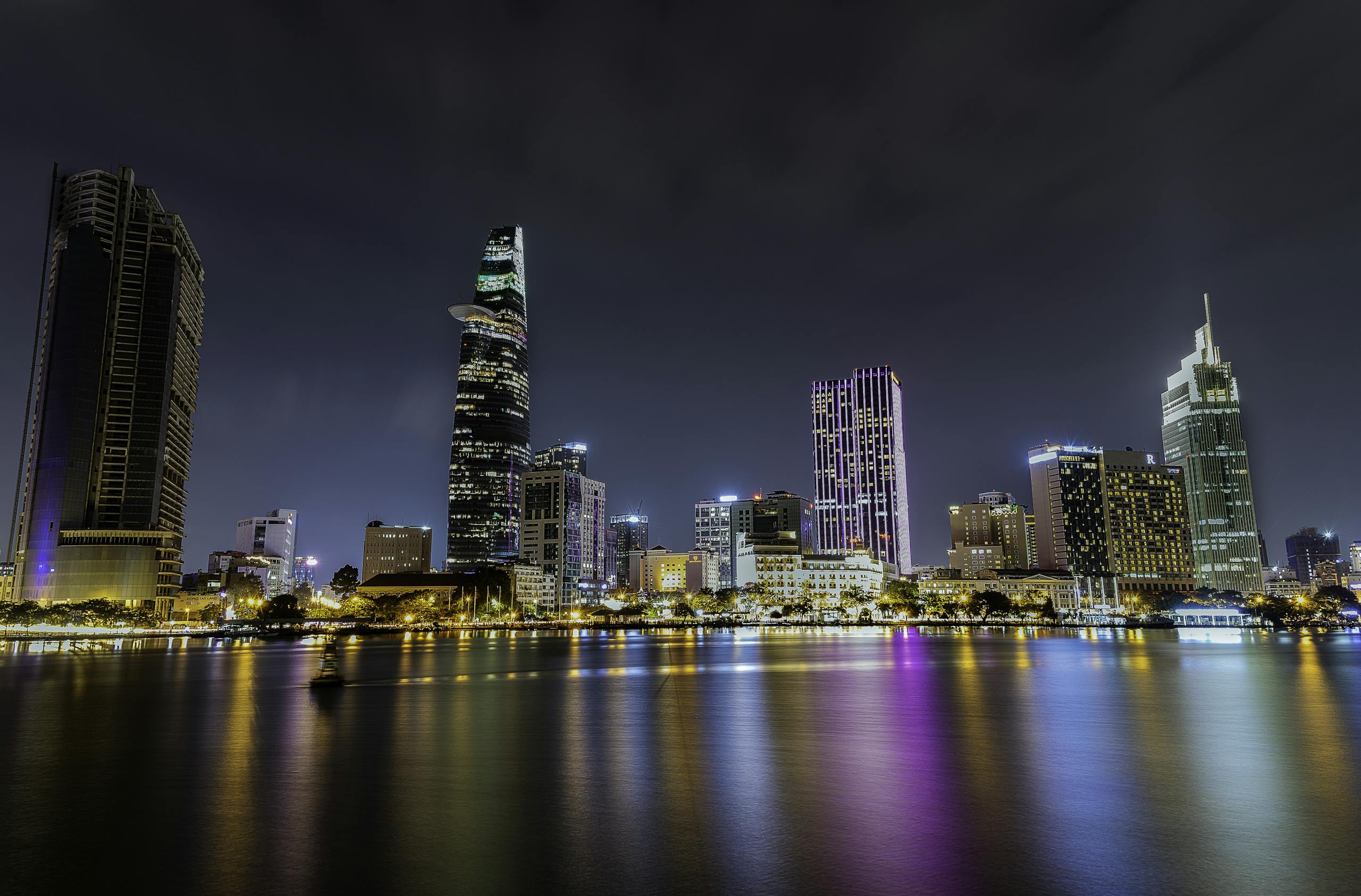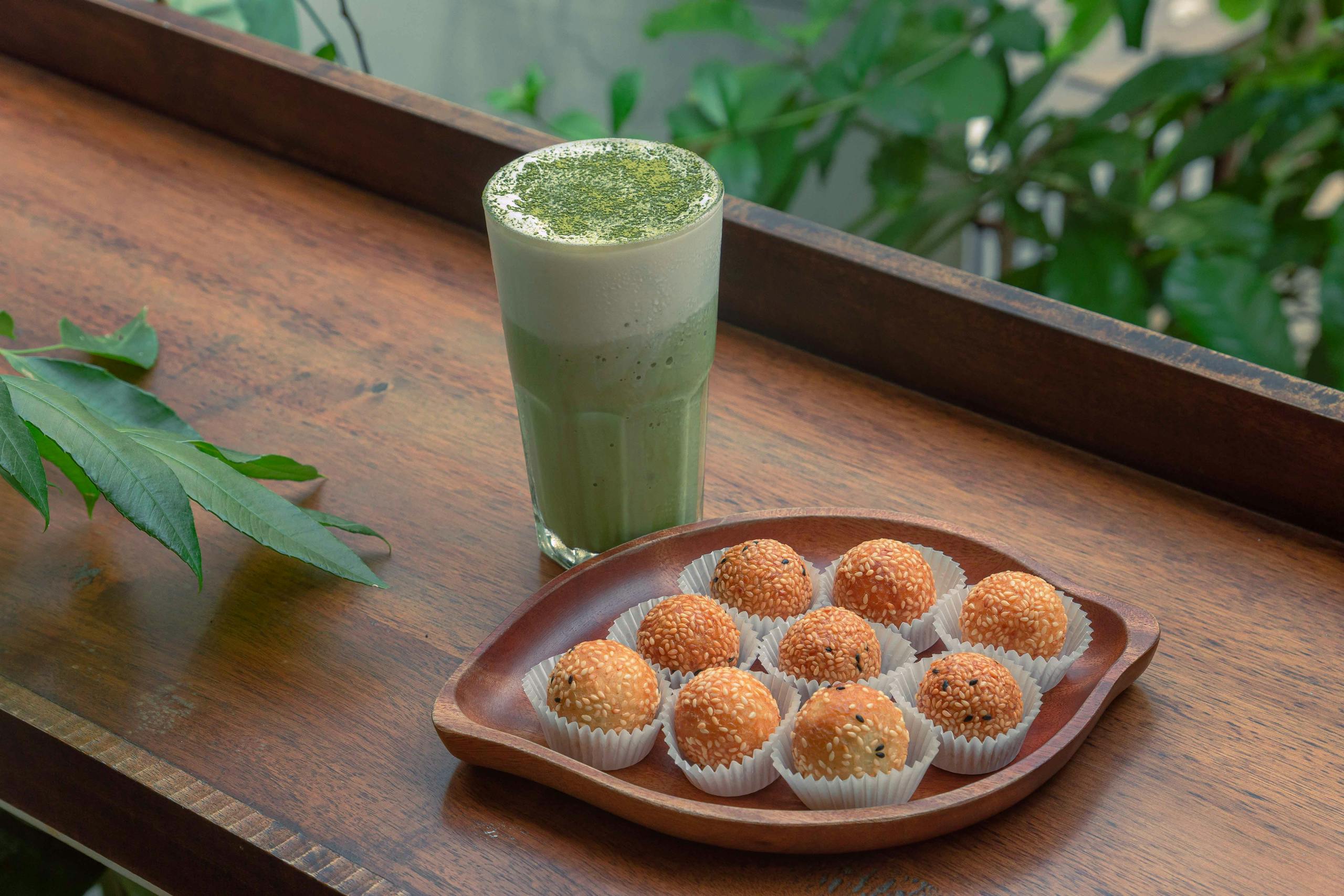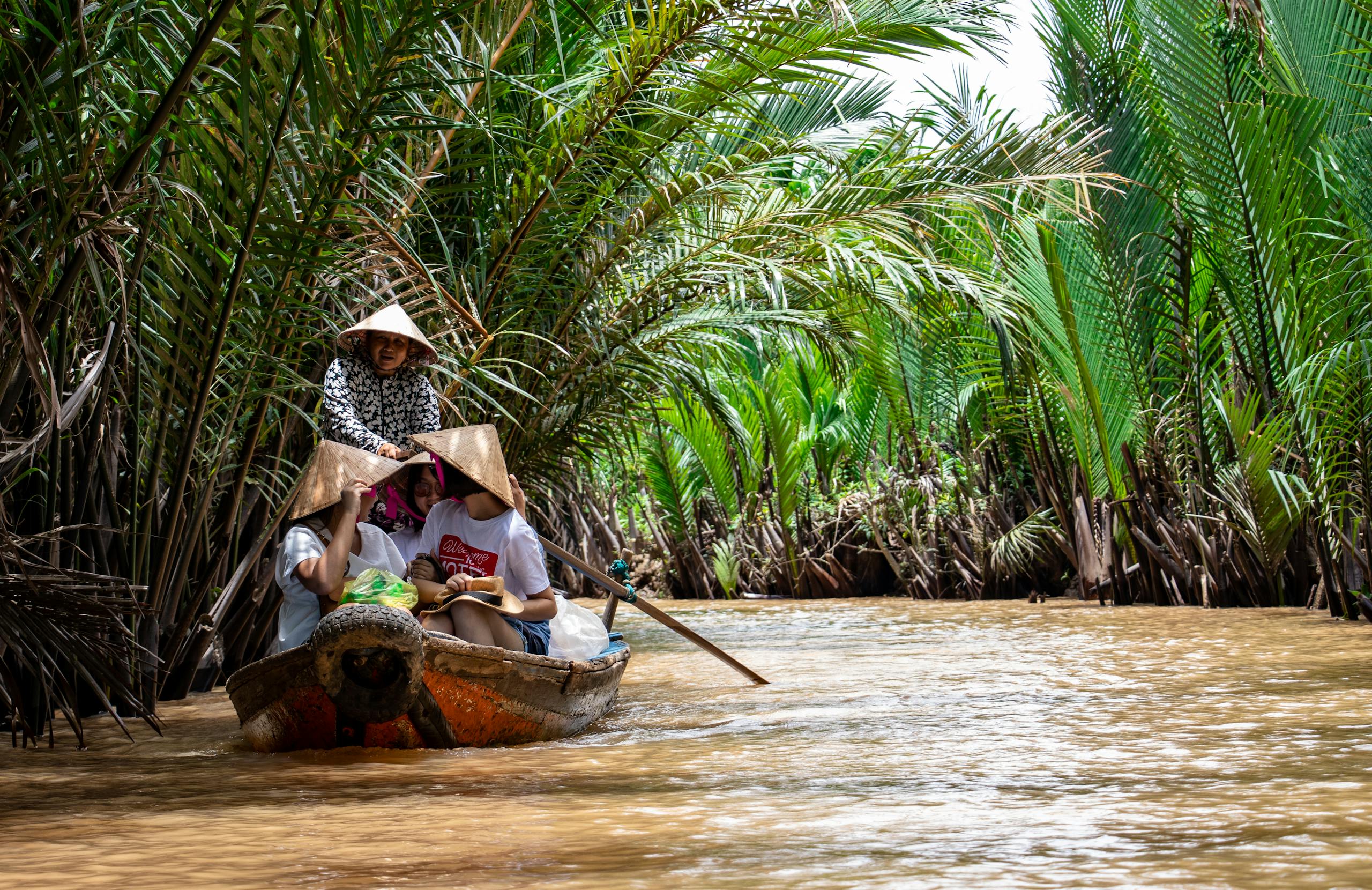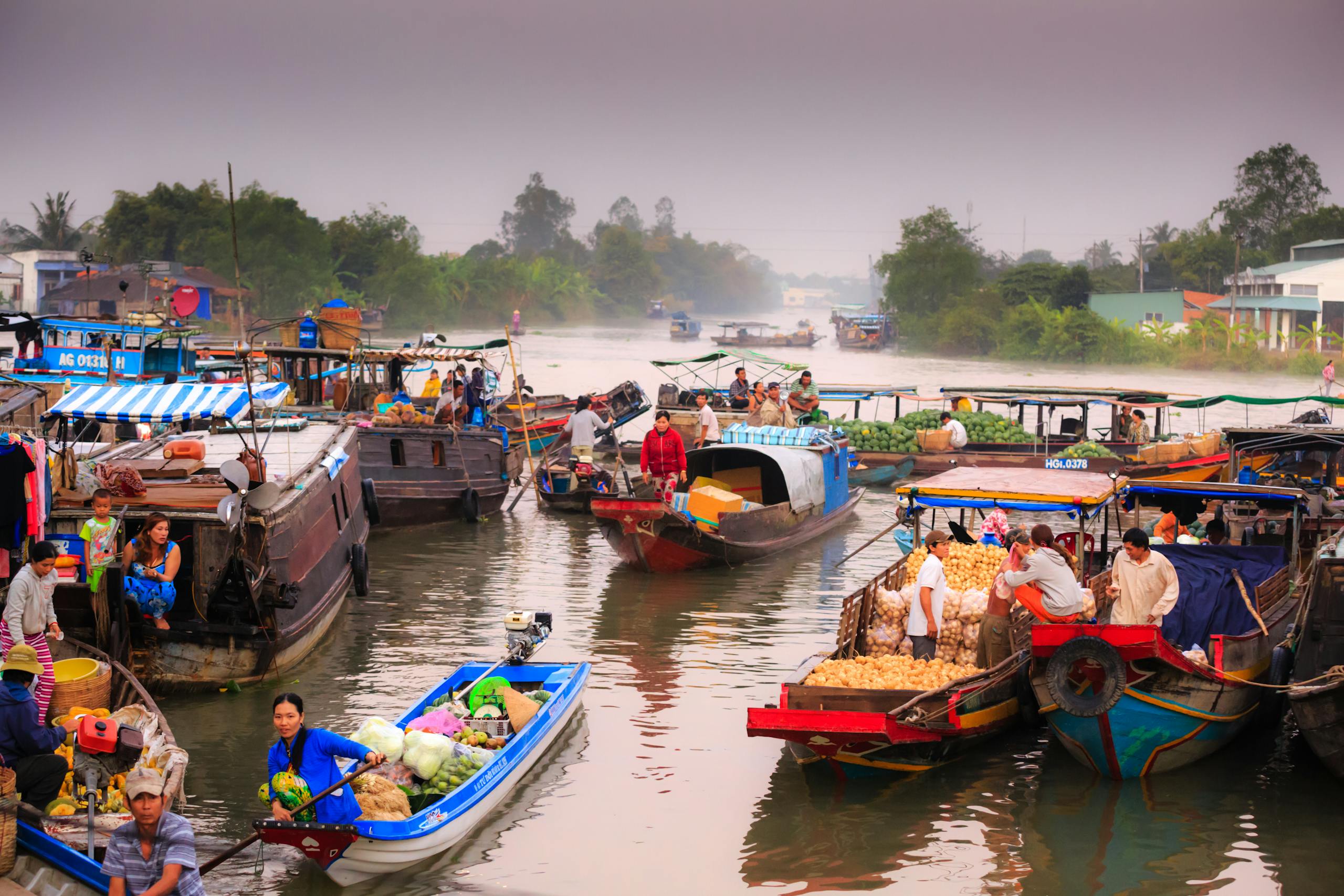Blog » Travel Guides » Essential 5-Day Vie...
Essential 5-Day Vietnam Itinerary: Explore Vietnam’s Highlights Efficiently
Discover a streamlined 5-day Vietnam travel itinerary designed for travelers with limited time. This guide covers must-see destinations like Hanoi, Ha Long Bay, Ho Chi Minh City, and the Mekong Delta, while blending iconic landmarks with unique local experiences for a rich, efficient adventure.
Key Takeaways
- This 5-day itinerary efficiently combines Northern Vietnam’s Hanoi and Ha Long Bay with Southern highlights like Ho Chi Minh City and the Mekong Delta to offer a rich and balanced cultural experience.
- Booking Ha Long Bay cruises and accommodations early—especially during peak seasons from October to December—is essential for the best experience and availability.
- For local transportation, taxis, Grab rides, domestic flights, and buses are reliable options, while region-specific choices like speedboats in the Mekong Delta add immersive travel variety.
- The optimal travel seasons are spring (March–April) and autumn (September–November), which provide comfortable weather and fewer extreme conditions across Vietnam’s diverse regions.
- Respecting local customs such as modest dressing, using polite greetings, and asking before photographing people enhances cultural connections and travel enjoyment.
- Hiring licensed local guides and joining specialized food or history tours deepens insight into Vietnam’s heritage and offers authentic, memorable experiences beyond typical sightseeing.
Got a quick trip to Vietnam but feeling a bit pressed for time?
This Vietnam travel itinerary for 5 days is made just for folks who want to squeeze in as much as possible without the usual overwhelm.
In just 5 days, you can dive into the vibrant culture, jaw-dropping landscapes, and rich history of both northern and southern Vietnam—without feeling like you’re constantly rushing.
Picture yourself weaving through Hanoi’s lively streets, marveling at the magical limestone formations in Ha Long Bay, bustling around Ho Chi Minh City’s markets, and drifting peacefully along the Mekong Delta’s waterways.
This itinerary hits a sweet spot between the big-name spots and those authentic local moments. Plus, you’ll get the lowdown on transportation, best times to visit, cultural tips, and handy travel hacks to make every minute count.
Whether it’s your first time visiting or you’re just after a tightly-packed adventure, this guide lays out a clear, doable map to explore Vietnam’s diverse regions without the stress.
Get ready for busy days brimming with history, food, nature, and city vibes—all wrapped up nicely in five days.
Introduction to Your 5-Day Vietnam Adventure

Why Choose a 5-Day Itinerary for Vietnam?
A well-thought-out 5-day itinerary is gold for travelers who want to catch Vietnam’s highlights without signing up for a long haul.
It’s all about balance — seeing famous sights and still soaking up real local culture.
Perfect if you’re new to the country or just don’t have heaps of vacation days. You’ll get to explore key regions without feeling like you’re zipping past everything too fast or missing the soul of Vietnam’s rich offerings.
Overview of Key Destinations Covered
This plan usually covers Vietnam’s vibrant north and bustling south, giving you a taste of the country’s wild contrasts:
- Northern Vietnam: Stroll through Hanoi’s charming Old Quarter, check out historic sites, and cruise among Ha Long Bay’s iconic limestone karsts.
- Southern Vietnam: Dive into Ho Chi Minh City’s energetic streets, explore the fascinating Cu Chi Tunnels, and float down the serene waterways and traditional villages of the Mekong Delta.
Note: Some folks might want to hit central spots or mountain escapes like Hue or Sapa, but this classic 5-day plan zooms in on Hanoi and Ho Chi Minh City to pack in iconic landmarks and authentic culture, making it a rich and memorable trip.
How This Itinerary Balances Iconic and Authentic Experiences
The best part?
This itinerary smartly juggles the “must-see” sights with authentic local moments.
You’ll cruise the stunning Ha Long Bay and visit historic war spots, but also get up close with Hanoi’s legendary street food scene, catch traditional water puppet shows, and dive into Ho Chi Minh City’s buzzing markets.
That means you’re not just ticking off top attractions—you’re actually connecting with Vietnam’s people and culture, packing meaning into every day.
Day 1-2: Exploring Northern Vietnam – Hanoi and Ha Long Bay

Top Cultural and Historical Attractions in Hanoi
Hanoi’s like a giant cultural treasure chest, full of historical and architectural gems showing off its rich past and unique charm.
Start at Hoan Kiem Lake, the city’s beating heart, where locals do tai chi amid centuries of legends and peaceful scenery.
Then, lose yourself wandering the Old Quarter, a maze of bustling streets alive with traditional shops, colonial vibes, and nonstop street energy.
The Imperial Citadel of Thang Long (a UNESCO World Heritage Site) tells stories of Vietnam’s political history through well-kept palaces and military remains.
Don’t miss the serene Temple of Literature, honoring Vietnam’s first university and Confucian ideals, or the solemn Ho Chi Minh Mausoleum, a national treasure.
Other highlights?
Think the graceful Hanoi Opera House, neo-Gothic beauty of Saint Joseph Cathedral, and the tranquil Tran Quoc Pagoda sitting pretty on West Lake. Swing by Quan Thanh Temple to see Taoist heritage, and admire architectural relics like the sturdy Long Bien Bridge or the ancient Quan Chuong Gate.
Unique Local Activities to Experience in Hanoi
But Hanoi isn’t just about looking around—it’s about jumping into everyday life.
Wander the narrow alleys of the Old Quarter, where the smells from street food stalls will pull you in—think bún chả and phở classics.
Check out Train Street, where trains zoom by just inches from cafés and houses—seriously thrilling!
Hop on a guided street food tour to find hidden eats run by families who know their stuff. And don’t skip the famous Water Puppet Show at Thang Long Puppet Theater—such a cool, traditional art unique to northern Vietnam.
Feeling like some quiet time? Explore the peaceful Ngoc Ha neighborhood or sip coffee at Trade Shop #37, a quirky Communist-era canteen-themed café with nostalgic vibes and unique snacks.
Planning Your Ha Long Bay Cruise Efficiently
Sorting out your Ha Long Bay cruise smartly is key to loving the experience.
Pick the bay area, cruise duration, and transport that fit your style and budget. You could go for a quick day trip just to get a taste, a 2-day/1-night cruise for classic spots, or a longer 3-day/2-night adventure to hit quieter places like Cat Ba Island.
There are boats for every budget—from simple budget options to luxury cruises with roomy cabins and family perks.
To get there, shuttle buses or private transfers from Hanoi take about 2.5 to 3.5 hours.
Fancy a real wow? Try a seaplane ride for stunning views—just know it’s pricey and weather-dependent.
Most cruises anchor overnight, with smaller boats for activities like kayaking, swimming, or exploring caves. Booking ahead saves headaches. Don’t forget sunscreen, swimwear, and maybe some motion sickness meds if you’re joining outdoor fun.
Tips for Booking and Seasonal Considerations
Want the best Ha Long Bay experience?
Book early—especially during peak season (October to December). The weather’s cool, dry, and sunny then, perfect for cruising. That’s when demand and prices are highest, though. The low season (May to September) means cheaper deals but comes with rain and sometimes typhoons.
January and February bring misty, cooler mornings and fewer crowds—but swimming?
Not so much. Holidays? Book months in advance (6 to 8 months is not overkill).
Going direct with cruise operators online often saves money and cuts out middleman fees.
Bring your own booze to dodge pricey drinks onboard. Wi-Fi might be spotty, and weather can change plans, so stay flexible. If you have dietary needs or mobility stuff, give your operator a heads-up—it makes life easier.
Day 3-5: Discovering Southern Vietnam – Ho Chi Minh City and Mekong Delta

Must-See Spots in Ho Chi Minh City with Local Flavor
Ho Chi Minh City (or Saigon) pulses with energy—markets, street food, culture all woven together. Start at Ben Thanh Market, the packed marketplace with souvenirs, fresh food, and colorful chatter.
For a less touristy swing, head to Binh Tay Market in Cho Lon, the city’s Chinatown, bursting with Chinese-Vietnamese culture, flowers, traditional medicine shops, and vibrant streets.
Craving street eats? Try Bánh Mì Chấm Hungtubes on Hai Bà Trưng Street for unique bánh mì with dipping sauces, or Phở Hòa Pasteur for that rich broth and tender beef everyone raves about.
Local joints like Banh Nam do the classic bánh mì proud, and guided motorbike food tours are a fun way to sniff out hidden foodie gems locals swear by.
Join Saigon’s café culture at Cộng Cà Phê, known for coconut coffee and retro feels. Nearby, the pink Tân Định Church is a favorite for snapping photos.
Take a breather at Le Van Tam Park, a green patch locals love, or dive into nightlife on Bui Vien Walking Street—bars, clubs, street performers all jazzing up the night.
Want to peek deeper into the city’s soul? Guided tours through residential alleys and markets offer a slice of everyday Saigon life away from tourist crowds. Between busy markets, iconic eats, cozy cafés, and lively neighborhoods, you’ll get the real vibe of Ho Chi Minh City.1,2,3,4
Immersive Mekong Delta Experiences Beyond the Usual
The Mekong Delta’s not just about cliché boat rides. Staying in a local homestay in spots like Binh Minh or near Can Tho lets you eat with families, learn local cooking (ever tried making bánh xèo?), and join traditional activities—you’re not just a visitor, you’re part of the scene.
Pedal your bike down quiet backroads past endless rice paddies, ancient Khmer temples, and colorful rural markets—a total sensory journey into agricultural life. Drop by workshops in Ben Tre or My Tho to see crafts like weaving and coconut candy-making up close, showing off real local skills.
Find peaceful hideouts like Con Chim Island for birdwatching and downtime. Visit fishing villages on stilts, maybe even lend a hand with net casting. Floating fish farms? Yep, those too—watch how locals nurture their aquaculture traditions.
Get into the spirit with regional music and dance during festivals or Tet, or join cooking evenings and visits to schools or community projects. These immersive experiences need a bit of planning but reward you with genuine, hands-on memories way beyond typical tourist trips.1,2,3,4,5
Navigating Transportation Between Ho Chi Minh City and Mekong Delta
Getting between Ho Chi Minh City and the Mekong Delta is pretty straightforward, with lots of options depending on your budget and vibe. Popular spots include My Tho, Ben Tre, and Can Tho.
- Buses and coaches leave regularly from the Western Bus Station—it’s easy to find rides with trusted companies like Thanh Buoi or Futa Bus Lines. They take 2 to 4 hours, cost around $7–14 USD, and often have AC and Wi-Fi for budget travelers.
- Private cars or taxis offer a comfy, flexible ride, usually $120–160 USD for round trips and about 2 hours travel. Grab and local agencies have you covered.
- Speedboats are a fun, scenic option sailing down the Saigon River from My Tho’s Tan Long Dock. Group or private charters fit around 10-15 people and offer a totally different delta perspective.
Feeling adventurous? Motorbikes can be rented if you know what you’re doing—but watch out for Vietnam’s way-too-busy traffic.
Can Tho has a small airport too, but ground and river travel usually give you a richer experience and make more sense for short trips. Just remember, traffic and holidays can cause delays, so booking ahead during busy times is a smart move.1,2,3,5
Key Seasonal Tips and Booking Advice for Southern Vietnam
The best time to visit southern Vietnam (think Ho Chi Minh City and Mekong Delta) is during the dry season, from December to April. Expect less rain, lower humidity, and plenty of sunshine—perfect for city strolls and boat rides.
Heads up: March and April get hot, like up to 38°C (100°F). So pack sun protection, keep hydrated, and maybe plan your outdoor fun early or late to dodge the heat. Tourist crowds peak between January and March, so book stuff early to lock in your spot.
The rainy season runs May through November, with heavy but usually brief afternoon showers. It’s quieter and cheaper then, but outdoor plans might get wet now and then.
For big travel periods and Lunar New Year (Tet), book way ahead—places fill up fast or close down. Shoulder months like late November and late April offer a nice mix of good weather and fewer crowds.
Pack layers for warm days and sudden showers, and keep your plans flexible. The south’s weather is pretty warm and steady year-round, so planning activities is usually straightforward.1,2,3,4,5
Travel Logistics and Planning Essentials

Best Time to Visit Vietnam for 5-Day Trips
If you’re there for just a quick 5-day spin, the best windows are usually spring (March to April) and autumn (September to November). These times dodge the heaviest rains and extreme heat, giving you comfy weather for sightseeing and outdoor fun. Traveling then helps everything flow smoother.
Practical Tips on Booking Flights and Accommodations
Snag your flights early to get good prices and spots, especially during busy times.
Vietnam’s main airports are Hanoi’s Noi Bai, Ho Chi Minh City’s Tan Son Nhat, and Da Nang for central Vietnam. When picking where to stay, aim for central spots like Hanoi’s Old Quarter, Ho Chi Minh City’s District 1, or Hoi An’s Ancient Town—makes getting around easier and pulls you into real local life.
Local Transportation Options Within Cities and Between Regions
Getting around? Use trusty taxis from companies like Mai Linh or Vinasun, or grab rides via apps like Grab. If you’re confident, renting a scooter gives freedom—just watch for Vietnam’s wild traffic! For longer trips, domestic flights are speedy, trains scenic (think Hanoi to Da Nang), and sleeper buses work if you’re on a budget. Planning ahead keeps you from wasting precious time.
Packing Checklist for a Short Vietnam Trip
Here’s a handy packing list to keep your 5-day adventure smooth:
- Light, breathable clothes for warm, humid weather
- Rain jacket or compact umbrella (especially for rainy season)
- Comfortable walking shoes good for city streets and countryside
- Power adapter (Vietnam’s 220V with plugs A, C, and D)
- Basic meds, insect repellent, and sunscreen
- Copies of important travel documents and extra passport photos
- Swimsuit (for beaches or Ha Long Bay cruises)
- Vietnamese Dong in small bills for easy shopping
- Reusable water bottle to stay hydrated and cut down on plastic waste
Also, travel insurance is a good safety net. Downloading translation apps or offline maps can be a lifesaver on the go.
Unique Cultural Insights to Enhance Your Trip

Understanding Regional Cultural Differences in Vietnam
Vietnam’s north, central, and south each have their own customs, dialects, and food scenes that make traveling extra interesting if you tune in.
Northern Vietnam, including Hanoi, is known for its formal vibe and traditions. Locals tend to be polite and a bit reserved, and the food’s all about subtle, refined flavors like phở and bún chả. The northern dialect is actually the standard Vietnamese and considered pretty prestigious.
Central Vietnam—places like Hue and Hoi An—is a cultural melting pot with a resilient history. Food here’s spicier and beautifully presented, with royal influences shining through dishes like bún bò Huế and bánh bèo. Their dialect also stands out.
Southern Vietnam, headed by Ho Chi Minh City, feels lively and laid-back. Locals are warm and open, and the food is sweeter and bolder—think cơm tấm and hủ tiếu Nam Vang. Plus, the coffee culture here is a total must-experience.
Recommended Food Tours and Historical Walks
Food tours are a perfect way to dive into Vietnam’s culinary variety. In Hanoi, street food tours through the Old Quarter showcase classics like phở and bún chả, plus tasty local bites. Hue’s food walks dig into royal dishes alongside visits to historic spots like the Imperial City.
Hoi An’s cooking classes and food walks highlight specialties like cao lầu and white rose dumplings, all set in its charming old streets. Meanwhile, Ho Chi Minh City’s bustling markets and District 1 offer lively food tours featuring bánh mì, fresh spring rolls, and strong southern coffee.
If history’s your thing, walking tours through Hanoi’s Hoan Kiem Lake and Temple of Literature, Hue’s UNESCO citadel and royal tombs, Hoi An’s lantern-lit old town, and Saigon’s French colonial sites and war museums reveal Vietnam’s rich past in immersive ways.
Here are some popular tours
- https://hafoodtours.com/
- https://www.hanoifreewalkingtours.com/
- Back of the Bike Tours – Ho Chi Minh City Food Tours
- Saigon Food Tour
- http://www.saigonstreeteats.com/
Respectful Travel Practices and Local Etiquette
Being mindful of local customs makes your trip richer and smoother. In Vietnam, a gentle nod or smile is a common greeting. Handshakes happen but are usually light. When giving or receiving gifts or business cards, use both hands—that’s respectful.
Cover your shoulders and knees, especially in temples or rural areas. Take off shoes before entering homes or sacred spots. Keep your voice down in public and avoid displays of anger or public affection—they’re generally frowned upon.
Pay with small denominations of Vietnamese đồng at markets to keep things smooth and always ask before snapping photos of people—especially monks and ethnic minorities. Don’t point your feet at people or religious items; that’s considered rude.
Sticking to these tips builds trust and opens doors to deeper, more meaningful experiences—making your quick Vietnam trip genuinely unforgettable.
Alternative Itinerary Options for Diverse Interests

Combining Northern and Southern Highlights Differently
Feeling like mixing things up?
You can tweak your 5-day Vietnam trip to get a fresh take. Maybe spend two days in Hanoi’s Old Quarter and on a Ha Long Bay cruise, then fly down to Ho Chi Minh City for three days.
This lets you really soak up Hanoi’s history and then relax into the southern city vibe. Add night markets in Ho Chi Minh City or a Mekong Delta boat trip to keep the adventure flowing.
Focused Food or History Tours Within a 5-Day Framework
Got a passion for food or history? Tailor your itinerary. Foodies might devote days to street food tours in Hanoi—phở, egg coffee, all the goodies—and later zoom around Ho Chi Minh City on scooter food tours for bánh mì and spring rolls.
History buffs can hit spots like Hỏa Lò Prison Museum, War Remnants Museum, and the imperial sites in Hue or Hoi An. Hiring local guides adds cultural depth and insider stories.
Slower Pace or Niche Interest Adjustments
Want to chill out or focus on something special?
Spend more time in rural retreats like Sapa or Mai Châu, where you can trek, stay with local families, and dive deep into ethnic minority cultures.
Or try a homestay in the Mekong Delta paired with cycling and cooking classes for a hands-on, laid-back experience beyond the usual tourist trail.
- Tip: Use regional flights between Hanoi and Ho Chi Minh City to save travel time when hopping between distant regions.
- Tip: Book specialized tours or local guides ahead of time—especially for food or history themes.
- Tip: Think about your energy levels and interests when picking a faster or slower pace to suit your style.
Final Thoughts
Jumping into a well-planned Vietnam travel itinerary for 5 days is a fantastic way to capture the heart of this vibrant, diverse country. From Hanoi’s historic charm and Ha Long Bay’s stunning views to Ho Chi Minh City’s bustling energy and the Mekong Delta’s immersive life, you’ll balance iconic sights with authentic cultural vibes.
With good planning, knowing the seasons, and practical tips, you’ll squeeze a lot out of your short trip without feeling like you’re just rushing around. Booking early, staying flexible, and keeping an open mind will make your visit both smooth and unforgettable.
Looking ahead, Vietnam is growing in sustainable tourism and cultural preservation, so travelers who travel thoughtfully and respectfully will find one-of-a-kind experiences waiting.
Pack smart, stay curious, and gear up to explore, savor, and connect with Vietnam’s amazing heritage and breathtaking landscapes during your unforgettable 5-day journey!
Related: Feeling like 5 days might not be enough? Explore other itineraries:
The Ultimate Vietnam Travel Itinerary Guide 2025: Tailored Trips for Every Traveler
- Key Takeaways
- Introduction to Your 5-Day Vietnam Adventure
- Day 1-2: Exploring Northern Vietnam – Hanoi and Ha Long Bay
- Day 3-5: Discovering Southern Vietnam – Ho Chi Minh City and Mekong Delta
- Travel Logistics and Planning Essentials
- Unique Cultural Insights to Enhance Your Trip
- Alternative Itinerary Options for Diverse Interests
- Final Thoughts
Get your FREE Monstera Art download
Join our WanderLife Studios mailing list to get updates about our work and be the first to know about upcoming art products.
As a Thank You Gift, you will get this wonderful hand-drawn Monstera Line Art as a digital download for FREE .

